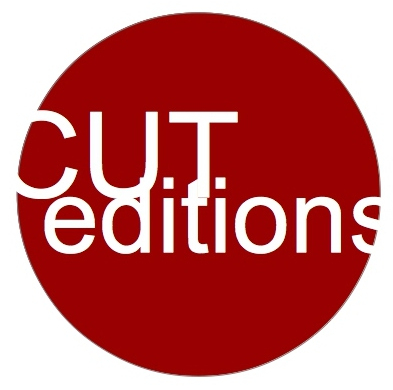screen printing for artists
Our Facilities.
There are many approaches to the making of original prints. Our facilities are primarily set up for the produciton of screen-prints but even within this particular discipline there are a wide variety of techniques that can be explored and indeed combined.
We aim to cater for as wide a range of approaches as possible, from using photographic and digitally generated imagery, to a more analogue or painterly engagement, we strive to help artists realise their printmaking ambitions.
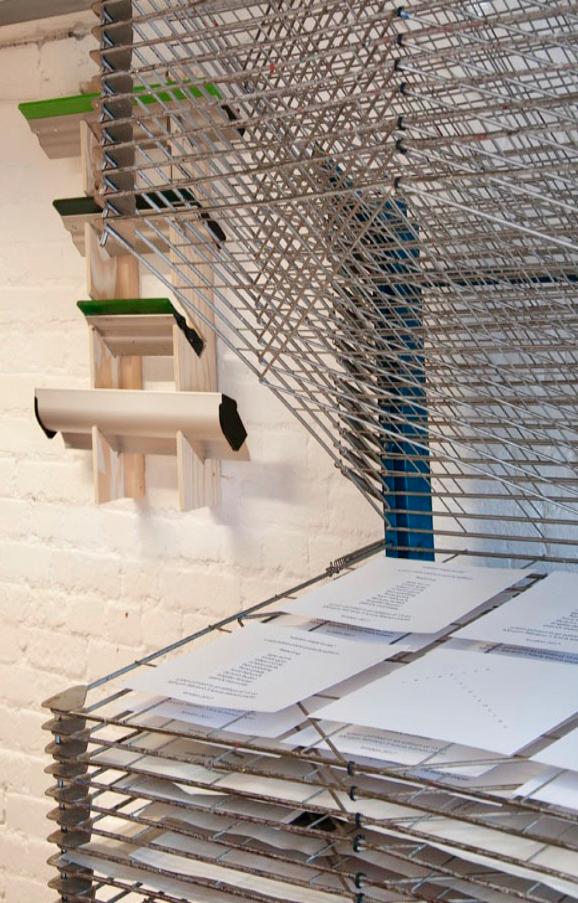
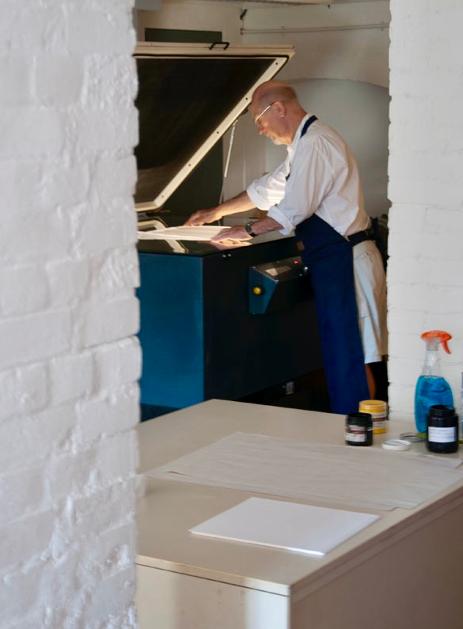
Positioning a transparency onto the exposure unit.
We use a UV exposure unit to photographically transfer art-work from a "positive" onto a light sensitised screen. This "positive" is generally an image or mark on a transparency (either acetate or true-grain film), but we can also expose objects or paper cut-outs as "photograms". Whatever stops the UV light will ultimately print whether its a drawn line or a square of card. Once the art work is exposed, it can be printed in any colour you choose, but the initial positive must be black. We can adjust the exposure time to account for the delicacy of the positive and our bed can take screens up to 1000 x 1200mm.
We have a range of screen sizes and mesh counts to accomodate a wide variety of needs. If the design is highly intricate, a very detailed bit-map or if there is a lot of subtle tone, we have screens stretched with 120 count mesh to retain high definition information and 140 super-fine mesh for extremely delicate work. We also have 77 count mesh which is good for strong saturation of colour and more graphic work. We coat our screens with a light emulsion in order to sensitise them ready for exposure which is a highly stable product and can sustain editioning very well.
Our back-lit washout booth allows us to accurately see the art work develop on the screen prior to printing so we can assess the quality of the exposure. The pressure hose can be adjusted depending on the length of the exposure time and the delicacy of the image.
As we are a water based workshop, we use an acrylic medium specifically formulated for screen printing to which acrylic colour is mixed. Our preferred choice of acrylic is Pip Seymore which is an excellent artist quality colour, but we are happy to accommodate if there is a specific colour the artist wishes to use from another brand. We can make our inks as transparent or opaque as required by adjusting the ratio of medium to acrylic or we can underprint areas with white if solid areas of colour are required. If an artist wants a gloss finish to the work, we can overprint with a glaze to achieve this. We are also happy to diamond dust and bronze dust editions .
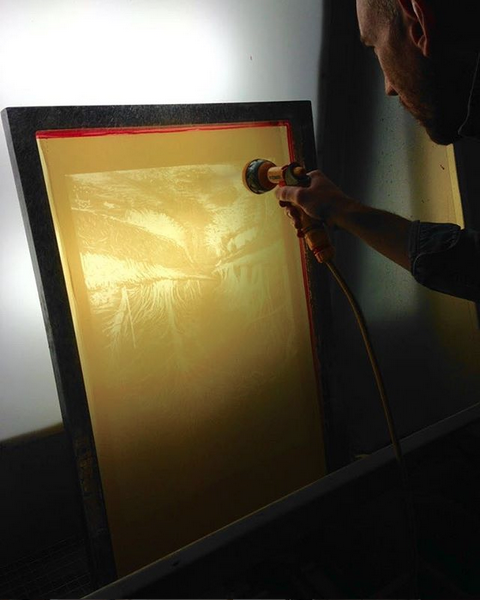
Washing out the exposed art work.
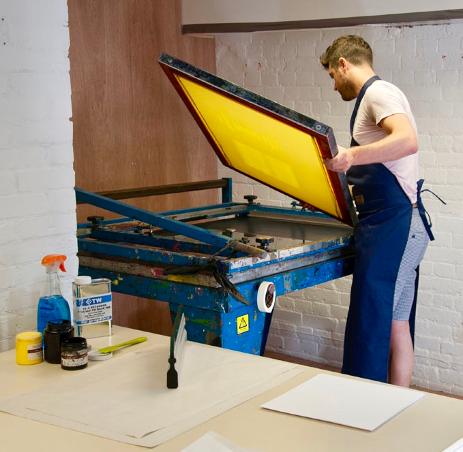
Setting the screen into the vacuum bed frame.
All printing is done using our vacuum bed. The vacuum sucks the printing paper down allowing for precise registration when positioning for edition runs and when aligning multiple colour layers.
There are a vast array of paper types that one can use, and the quality, colour, finish and weight of the paper is an integral part of the overall print as an object. We are happy to advise and can provide samples of various paper types to help artist's make decisions.
We have a general stock of various acid free Fabriano and Somerset printmaking papers which are 100% cotton, and Snowden Cartridge paper but will be happy to order in specific papers depending on the needs of a particular project.
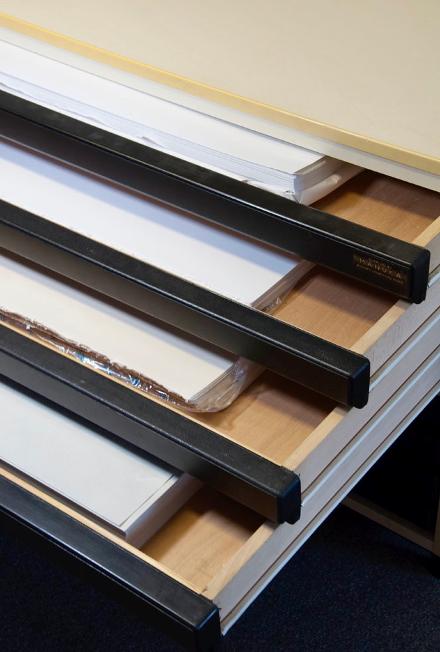
Our paper stock of specialist papers.
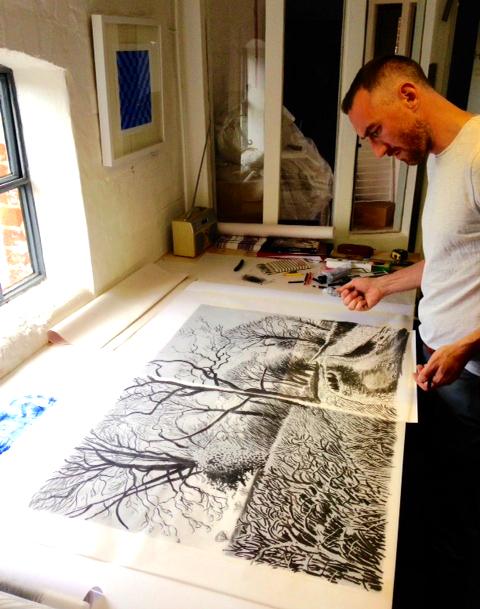
Working on a transparency film ready for exposure.
As part of the collaborative nature of the process, our facilities allow for artists to make and develop their ideas within the studio. We have a light box but artists may wish to generate their work within their own studio and then bring it to the workshop for printing.
Throughout the process we will be happy to advise, assist and help in any way we can. It is important to remember it is a dialogue between artist and technician and the more we discuss your ideas, the better the result will be!
